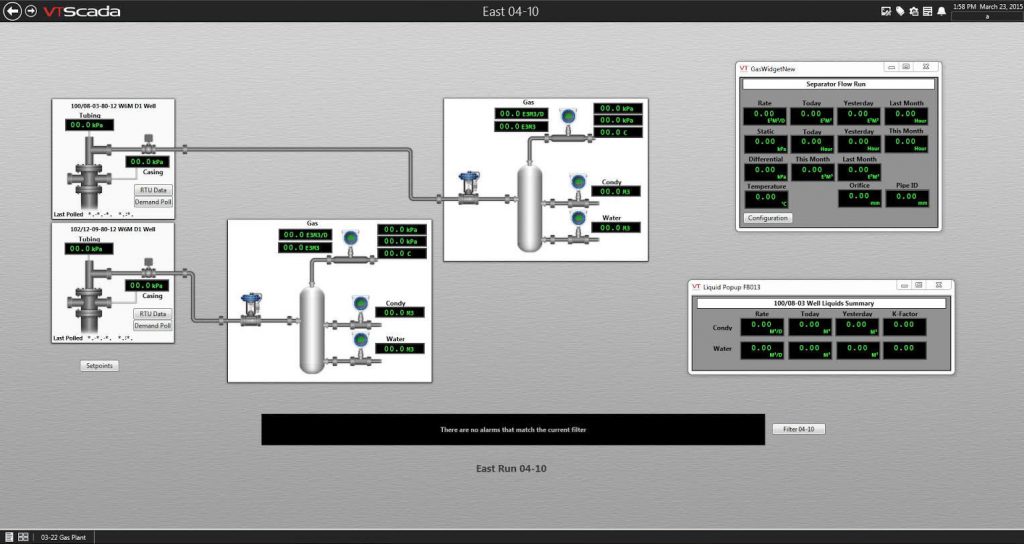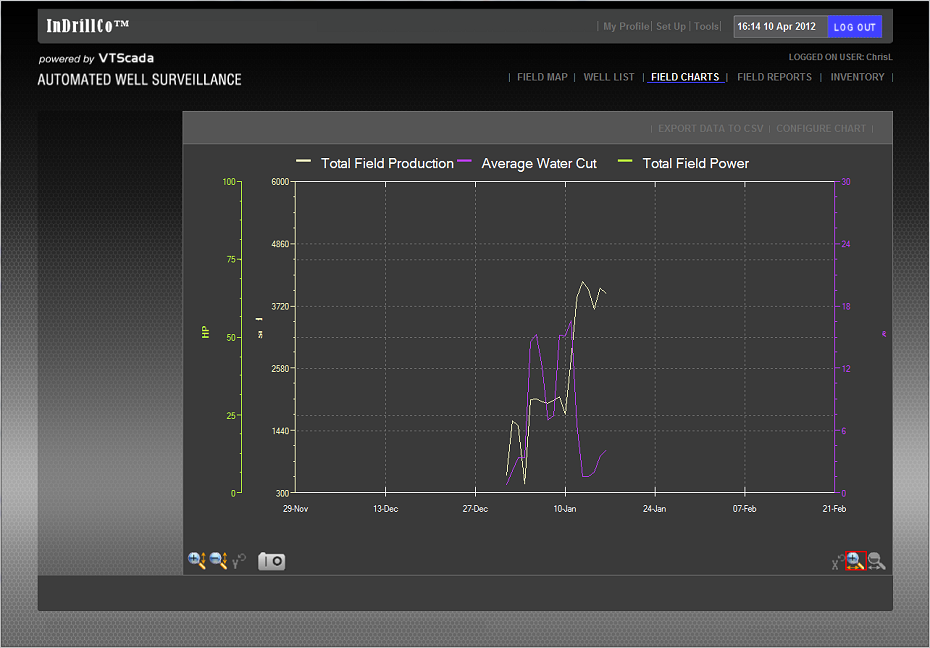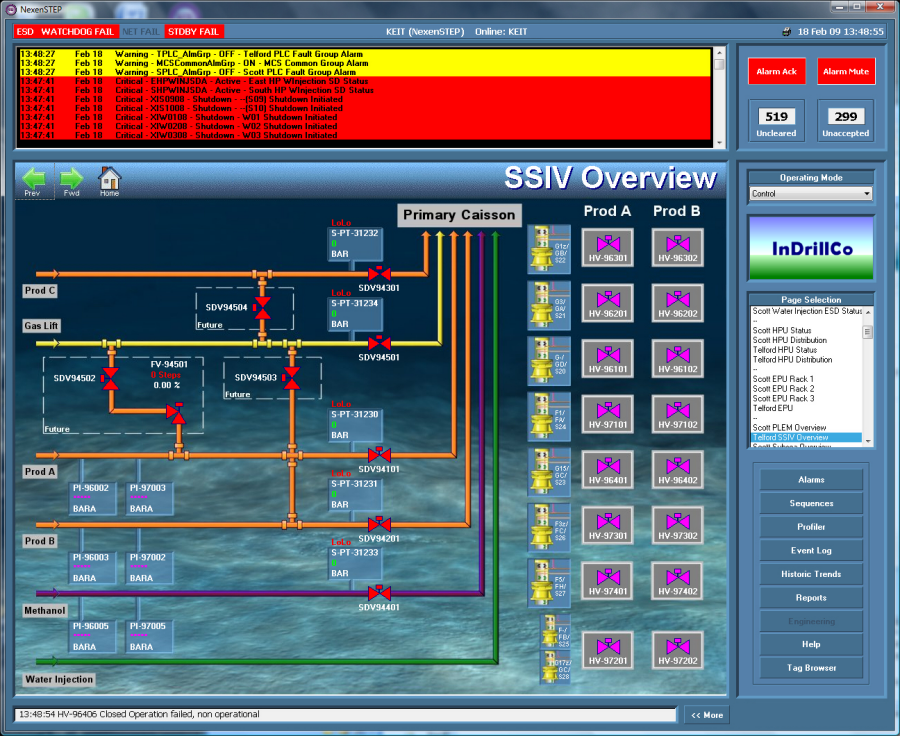VTScada is used by some of the largest oil and gas producers in the world. In fact, VTScada controls over one third of the oil production in the North Sea alone. Major solution provider Aker Solutions standardized on VTScada for their Subsea Monitoring and Control System (SMACS) which is installed on over 190 oil platforms worldwide.
The oil, gas and chemicals industries utilize VTScada’s event-driven execution, on-line configuration, and real-time field data management to support their systems. Of critical importance, in most of these SCADA systems, are the standard features that include alarms management and emergency response, communications over a variety of mediums, redundancy at all points in system, trend analysis, and remote system access. The powerful scripting language also allows graphing of pump curves.
Other Oil and Gas SCADA Applications:
- Oil and Gas Distribution
- Tank Farm Monitoring
- Renewable Resource Research
- Asset Management
- Adv. Protocol Conversion
- Downhole Sub Pump Monitoring
- Multi-phase Flow Metering
Oil and Gas Distribution SCADA
The process of getting oil and gas from the well head (production source) to the refinery (processing facility) and ultimately to the consumer usually requires a large infrastructure of pipeline networks. The advances made in oil and gas distribution SCADA technology have significantly reduced the cost for remote telemetry devices and the communications infrastructure required to retrieve data from these devices. This in turn allows operators to remotely monitor, control and optimize their distribution network.
- Identify conditions that can lead to spills (leak detection)
- Quickly pinpoint spills and take upstream actions to mitigate effects
- Prepare downstream processes for inflow product composition
- Determine equipment effectiveness (i.e. pumping efficiency)
- Provide data to 3rd party modelling/simulation software (e.g. flow modelling, batch tracking)
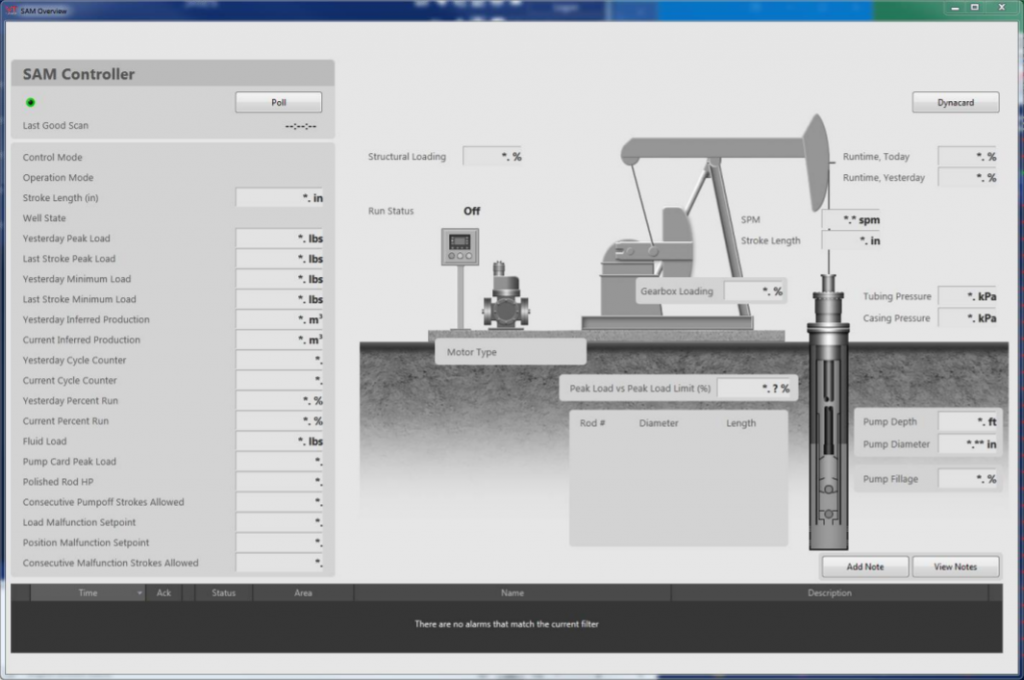
Subsea Wellhead Control SCADA
With the current high price of oil, marginal oil field developments are now becoming viable. This has led to a dramatic increase in the number of subsea developments in both shallow and deep water environments.
Subsea production systems can range in complexity from a single satellite well with a flow line linked to a fixed platform, Floating Production Storage & Offloading (FPSO), or an onshore installation, to several wells on a template or clustered around a manifold, and transferring to a fixed or floating facility, or directly to an onshore installation.
- Alarm and event handler
- Operator control of valves/chokes/pumps
- Retrieval and display of all sensor data
- Graphical display of subsea wells/manifolds, topsides
- Hydraulic Power Unit (HPU)
- Electrical Power Unit (EPU)
- Emergency Shut Down (ESD)
- Performs shut-down sequences
- Valve foot-printing
- Valve and control interlocks
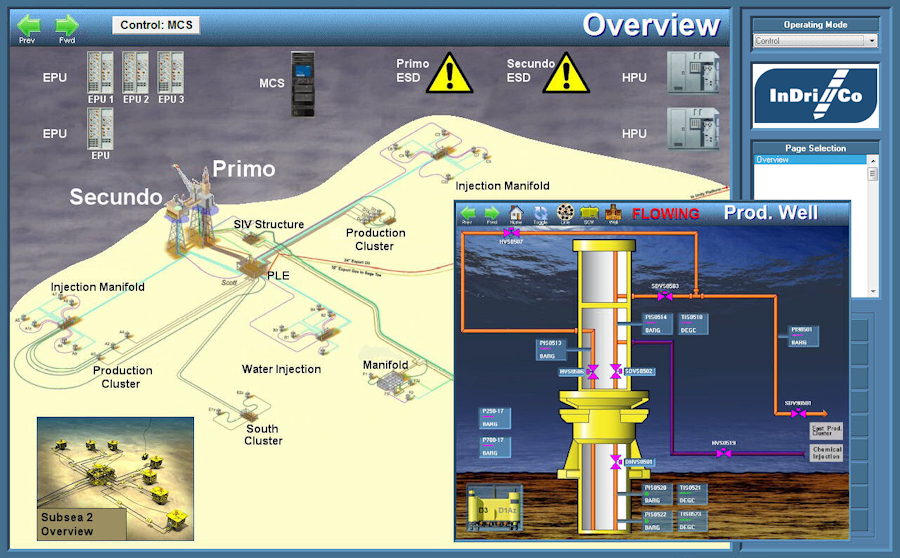
Permanent Downhole Gauge SCADA
A Permanent Downhole Gauge (PDG) is a pressure and/or temperature gauge permanently installed in an oil or gas well. Typically, these are installed within tubing in the well and can measure the tubing pressure and/or the annulus pressure. The data provided from the downhole gauge are useful to reservoir engineers in determining the quantities of oil or gas contained below the earth’s surface in an oil or gas reservoir, especially in the first few minutes or hours of production of the well. This allows the well to be efficiently managed and optimized for maximizing production over the lifetime of the well.
- Measure downhole pressure, temperature and flow
- Raw data converted from frequency to engineering units using calibrated co-efficients
- Gauge interfaces to Schlumberger, Woodgroup, Exal Permanent Quartzdyne Gauges, to many others
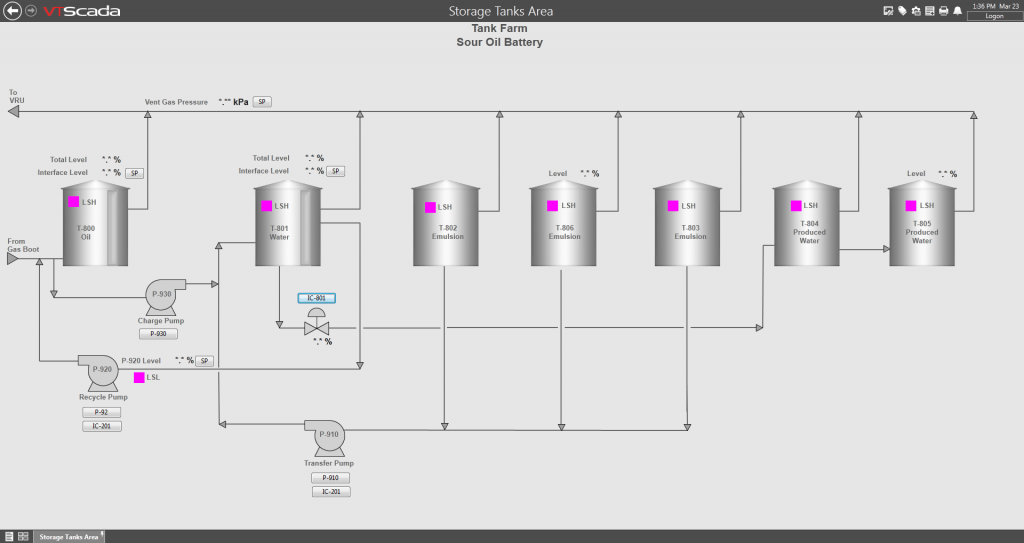
Artificial Lift SCADA
This refers to the use of artificial means to increase the flow of liquids (typically crude oil) which is achieved by the use of a mechanical device inside the well (a pump), or by decreasing the weight of the hydrostatic column by injecting gas into the liquid some distance down the well. Artificial lift is needed in wells when there is insufficient pressure in the reservoir to lift the produced fluids to the surface, but often used in naturally flowing wells (which do not technically need it) to increase the flow rate above what would flow naturally.
- Monitoring and control of artificial lift:
- Electrical Submersible Pump (ESP)
- Progressive Cavity Pump (PCP)
- Gas Lift
- Vibration monitoring and alarming
- Intelligent well optimization
- SMART well automatic control of Variable Speed Drives (VSD)
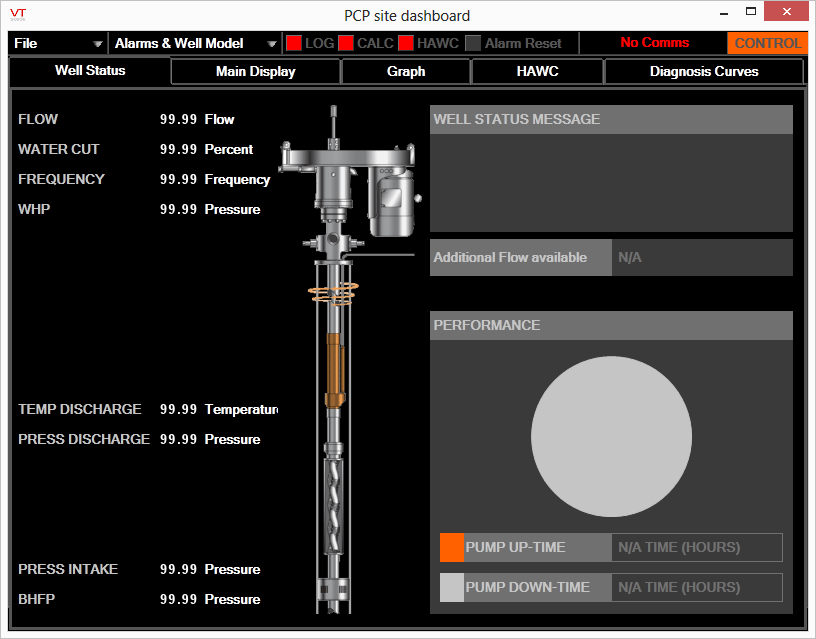
Hosted SCADA Solutions
VTScada also provides hosted monitoring of production fields in the southern US, South America, and the Middle East.
In addition, it is used for pipeline monitoring in a number of locations and controls the growth of algae (biofuels) in Asia.
Several of the largest cryogenic gas monitoring systems in the US and Europe are also running with VTScada.
